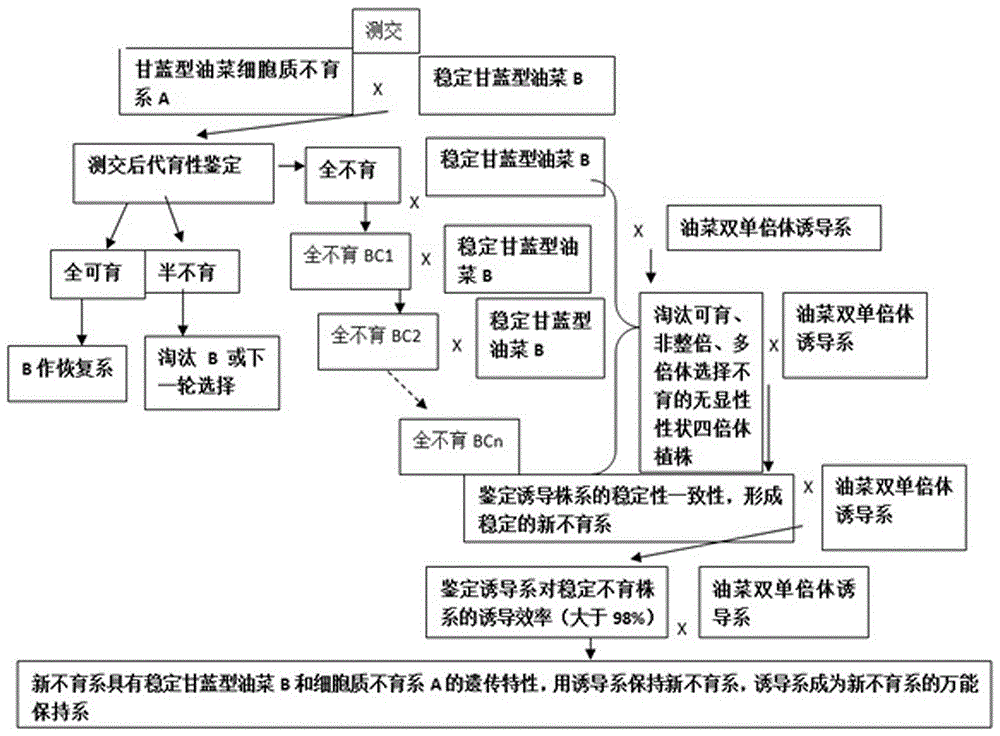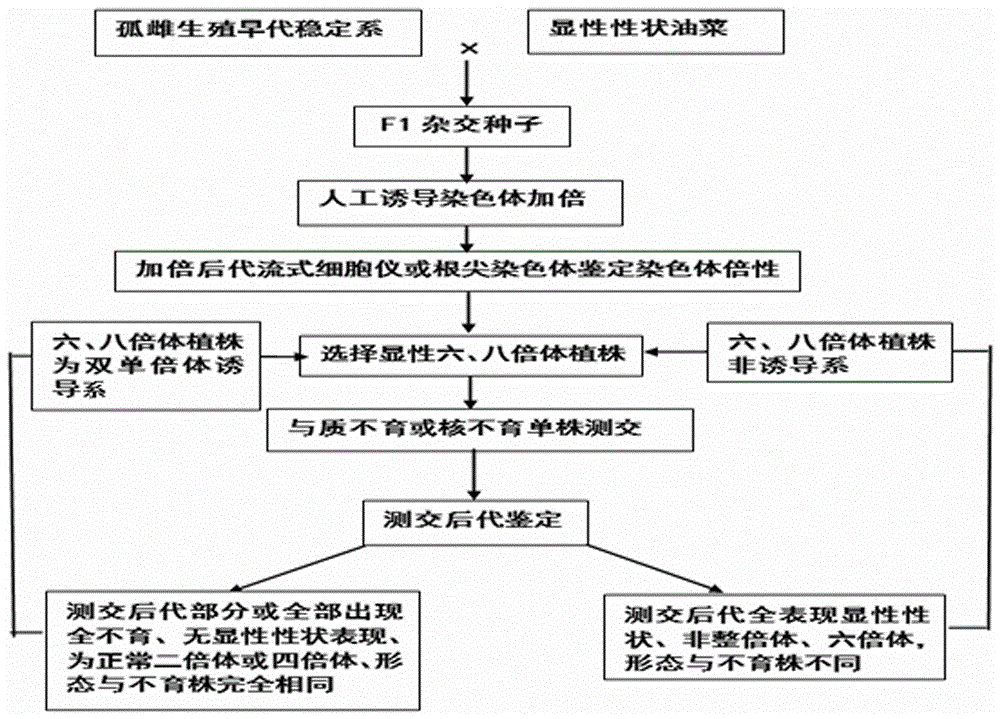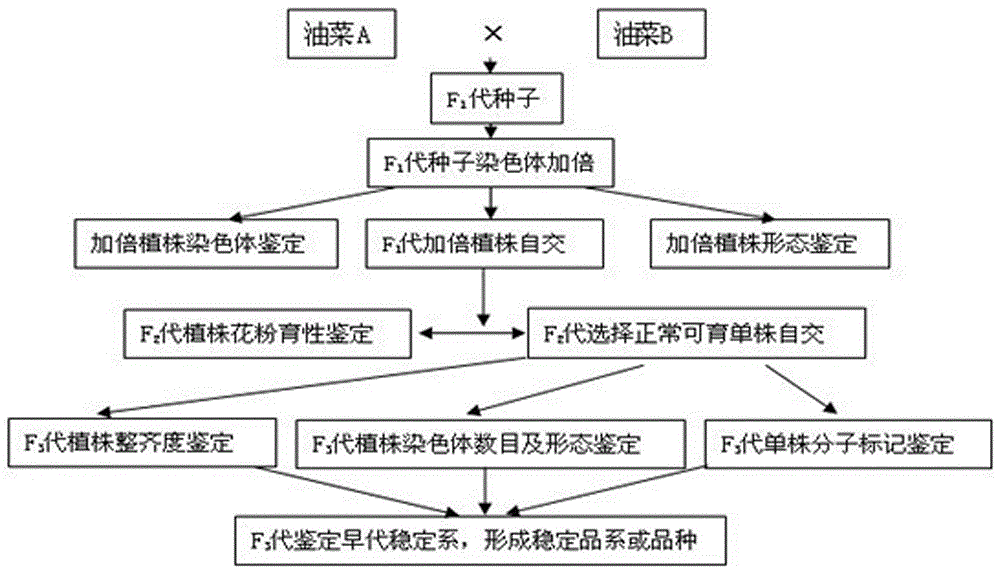Method for selecting and breeding cabbage type rape cytoplasm sterile line through rape doubled haploid inducible system
A Brassica napus, double haploid technology is applied in the directions of horticultural methods, botanical equipment and methods, plant genetic improvement, etc., and can solve the problems of low induction efficiency and the like
- Summary
- Abstract
- Description
- Claims
- Application Information
AI Technical Summary
Problems solved by technology
Method used
Image
Examples
Embodiment 1
[0079] see figure 1 , figure 2 , Figure 4 , Figure 5 , Figure 7 , Brassica napus microspore cultured progeny DH0051 in vitro was testcrossed with the Polyma cytoplasmic male sterile line Rong A0068, and the testcross offspring were identified, and the testcross offspring were highly sterile. The maintainer of the sterile line. The pollen of rapeseed double haploid induction line Y3560 was used to pollinate the sterile single plant of the test cross progeny, bagged and isolated, and the seeds of the induced progeny were harvested. The induced offspring were planted, and the ploidy of the induced offspring was identified by flow cytometry at the seedling stage, and the polyploid, haploid, and aneuploid plants were eliminated. At the flowering stage, eliminate the sterile plants with dominant traits (dwarf traits) of rapeseed double haploid induction line Y3560 and select 15 sterile individual plants that are completely sterile and have better plant growth. The inducib...
Embodiment 2
[0157] see figure 1 , figure 2 , Figure 4 , Figure 5 , Figure 8 , Brassica napus microspore cultured progeny DH0034 in vitro was testcrossed with radish cytoplasmic sterile line Rongluo A100, and the offspring of the testcross were identified and found to be highly sterile. The maintenance line of the breeding line. The pollen of rapeseed double haploid induction line Y3380 was used to pollinate the sterile single plant of test cross progeny, bagged and isolated, and the seeds of induced progeny were harvested. The induced offspring were planted, and the ploidy of the induced offspring was identified by flow cytometry at the seedling stage, and the polyploid, haploid, and aneuploid plants were eliminated. At the flowering stage, the sterile plants with dominant traits (dwarf traits) of rapeseed double haploid induction line Y3380 were eliminated. 20 sterile individual plants with complete sterility and good plant growth were selected, and the sterile individual plan...
PUM
 Login to View More
Login to View More Abstract
Description
Claims
Application Information
 Login to View More
Login to View More - R&D
- Intellectual Property
- Life Sciences
- Materials
- Tech Scout
- Unparalleled Data Quality
- Higher Quality Content
- 60% Fewer Hallucinations
Browse by: Latest US Patents, China's latest patents, Technical Efficacy Thesaurus, Application Domain, Technology Topic, Popular Technical Reports.
© 2025 PatSnap. All rights reserved.Legal|Privacy policy|Modern Slavery Act Transparency Statement|Sitemap|About US| Contact US: help@patsnap.com



